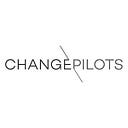5 STEPS OF DESIGN SAFARI — How to handle qualitative research on your own?
Design Safari is a tool often used at Change Pilots to experience and analyze specific products, services, user paths and spaces in their natural context. Design Safari it’s a moment to go beyond the well-known environments or office spaces to experience real-world examples.
Thanks to this method, anyone who runs a design process is able to collect unquestionable data with little to no financial effort. Compared to other tools and ethnographic methods, DS distinguishes itself above all by its affordability — there is no requirement to be a certified researcher or ethnographer. This tool easily collects data and enables its synthesis. Here is your own Design Safari in 5 easy steps.
“People don’t need products or services, but the value they provide” — Design Safari motto
1 Responding to a Design Challenge or setting a Starting Point makes Design Safari’s first step. At that point, we try to specify for whom we design and what problem/need we address. This will be our azimuth and motivator throughout the entire duration of Design Safari process. It is also worth to note down every question arising at that moment in the form of a Wanted Information List.
2 In the second step, we define exactly where to and who to visit during the course of our research — here we answer the following questions:
Which users will we visit?
How will we interact with them?
Where will we examine a similar service or subject?
What analogous examples are worth looking at?
Such a plan will allow us to make sure that we do not omit any important point of contact. Here, check the Preparatory Card.
3 Selecting the right tools for collecting information is the third step of the process. We often use our own Toolbox, which allows us to keep track of collected insights in a number of categories. This enables us to use them more efficiently later on. We encourage you to take as many photos, voice recordings (if possible) and physical artifacts (e.g. leaflets) as possible during your fieldwork. All observations are worth their weight in gold and contain unique solutions. Here, check the Observation Card.
4 The fourth stage is to go out in the field — its intensity and duration depend on your abilities. Sometimes, it can be 2 hours to visit 2–3 places. However, it often turns out that in order to realize your plan you will need a week. The time devoted to data collection should not affect the quality of information. We recommend that you spend one full day working in the field and visit up to 6–8 places to collect objective data. Here, check the Toolbox.
5 The final, fifth step is to synthesize collected materials. When we sense that we already have enough data, we head back to the studio to give meaning to all the inspirations in a structured way. There are many synthesis tools available, though we personally like to use frequently Design Foundation, Value Proposition and obligatorily, the User Journey. By collecting all the information in one place (the so-called hygienic view) we are able to look at it from a different perspective. Often, the gathered and analyzed materials are sent as a design brief to design offices and make a solid contribution to further creative processes. These are undeniable data that reflect the “truth of the street”, i.e. what is currently happening in a given research topic in the world for which we design. Here, check the Design Foundations & Value Proposition.
We always suggest doing an additional Design Safari a few days after you first go out in the field. It usually happens that during the first synthesis we end up with more questions than answers. Good news — it allows us to explore our challenge even deeper.
Design Safari is not only a tool but also demo workshops, where the team at Change Pilots shows how such field research can look like. During the workshop, participants visit carefully selected commercial and non-commercial cases that stand out in their category by how they deliver value to their users. Design Safari, as well as many other similar research processes, should be used in the early stages of design processes in methodologies such as Design Thinking, Service Design, and Human-Centered Design.
Good luck in the field!
#designsafari #fieldtrip #changepilots
Text: Justyna Turek, co-founder of Change Pilots and Design Safari.
